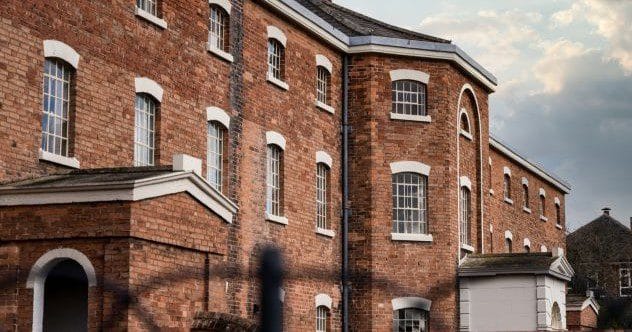Life in the Victorian era could be incredibly challenging, especially if you weren’t wealthy. For the poor and unemployed, one word struck fear into their hearts: workhouse. These institutions provided accommodation and work, but they were seen as a last resort due to their terrible conditions. Let’s explore 10 somber facts about life inside a Victorian workhouse.
Established Through the Poor Law of 1834
Prior to 1834, caring for the poor was increasingly costly, funded by middle and upper-class taxes. These citizens felt they were simply rewarding laziness. In response, the Poor Law of 1834 was enacted, aiming to reduce the cost of poor relief and encourage self-sufficiency.
This law grouped parishes into unions, each required to open a workhouse if they hadn’t already. The only way for poor individuals to receive assistance was to live and work in these institutions. However, many criticized workhouses as “prisons for the poor,” highlighting the controversial nature of the new system. [1]
Cruel and Unsanitary Conditions
Workhouses became synonymous with the harsh realities of the Victorian era, marked by dire conditions, long working hours, forced child labor, malnutrition, and beatings. The prison-like environment made them feared and loathed.
Survival was a struggle, with high death rates due to rapidly spreading diseases like measles and smallpox. Sleeping conditions were appalling, with crowded beds and minimal light. Inmates were expected to work in unsafe, factory-style production lines focused on profit rather than alleviating poverty. [2]
Medical Care in a Workhouse
Falling ill in a workhouse meant facing appalling medical care, especially before the 1870s. Infirmary rooms were small, poorly ventilated, and unhygienic. Patients of all conditions were mixed together, sometimes sharing beds.
The Poor Law mandated at least one qualified medical officer, but the position was unattractive, leading to shortages. Early medical care was often provided by illiterate and frequently drunk female inmates, an unsafe combination for patient well-being. Shockingly, trained nurses were not employed outside London workhouses until 1863. [3]
Children in the Workhouse Had It Bad Too
Children in workhouses endured dire conditions. A physician’s 1838 visit to a Whitechapel workhouse revealed 23 pale, unhealthy children aged two to three kept in one room, rarely taken outside. Another section housed 104 girls sleeping four or more to a bed in cramped, poorly ventilated rooms.
Despite rules against corporal punishment, cruelty was rampant. One eight-year-old boy was flogged for complaining about unjust beatings, while a 13-year-old girl was beaten for leaving dirt in a corner, and another eight-year-old was suspended in a bag from a beam. [4]
Families Were Separated
Adding to the misery, families entering workhouses were deliberately separated to prevent them from “breeding,” a term used by the middle class who believed the poor had children to claim more money. Children were separated from parents to turn them into useful workers, as parents were deemed incapable.
Workhouse inmates were divided into four categories: elderly and impotent, children, able-bodied men, and able-bodied women. Each group had separate dormitories, day rooms, and exercise yards. Family members might see each other in the chapel or during meals but were forbidden from speaking. [5]
Workhouse-Related Scandals
Workhouses were plagued by scandals. In 1845, the Andover workhouse was run like a brutal penal colony. Conditions were so dire that inmates committed crimes to be sent to prison, where conditions were better.
A guardian witnessed inmates fighting over bones meant for fertilizer, driven by starvation to pick gristle and marrow from rotting bones. Inmates were on starvation diets while forced to use heavy rammers to crush bones. The master profited by buying bones cheaply and selling them crushed at a higher price.
Another scandal at the Huddersfield workhouse in 1848 revealed inmates going without bedding changes for nine weeks. Beds used by typhus patients were reused without cleaning, and were full of lice. Patients with infectious fevers shared beds, and a live patient even shared a bed with a corpse. [6]
Those Who Died in the Workhouse
When an inmate died, their family was notified to arrange the funeral. If the family couldn’t afford it, the workhouse staff arranged a burial in a nearby cemetery. The cheapest coffin was used, and the body was buried in an unmarked grave, sometimes in unsacred ground. [7]
Workhouse Punishment
Workhouses were highly disciplined, with strict rules displayed and read aloud to all inmates. Violations were severely punished and categorized as either disorderly or refractory.
Disorderly behavior, such as noise, disobedience, swearing, and escape attempts, was punished by removing luxuries like tea or butter and imposing a bland diet of bread and potatoes. Refractory behavior, including assault, drunkenness, property damage, or inappropriate behavior, resulted in solitary confinement, with severe cases taken to the Justice of the Peace.
Child punishment included caning for sleeping during Sunday Service and flogging for throwing water or kicking the schoolmaster. [8]
Long and Monotonous Days
Life in a workhouse was monotonous. The day began with a rising bell between 6 and 7 am, followed by breakfast at 6:30 am and work at 7 am. An hour was allowed for lunch from midday to 1 pm, work continued until 6 pm, with supper from 6 to 7 pm, and bedtime at 8 pm.
Duties varied by gender. Men crushed bones, picked oakum, or broke stones, while women did laundry, cooking, and sewing. [9]
Mundane and Unvaried Food
The 1834 Poor Law dictated a strict diet. Breakfast and supper were bread and cheese or porridge. Lunch was soup or meat and potatoes, with occasional suet or rice pudding. Women and children received smaller portions than men, while elderly inmates received butter, sugar, and tea weekly.
The diet was bland, lacking fruits and vegetables, leading to vitamin and mineral deficiencies. This minimal diet was designed to keep inmates alive and deter those who didn’t need to be there. [10]
The Victorian workhouses were indeed bleak places, marked by cruelty, disease, and despair. These institutions, intended to provide a solution to poverty, instead became symbols of suffering and hardship that continue to resonate through history.
Share your thoughts or experiences in the comments below!










